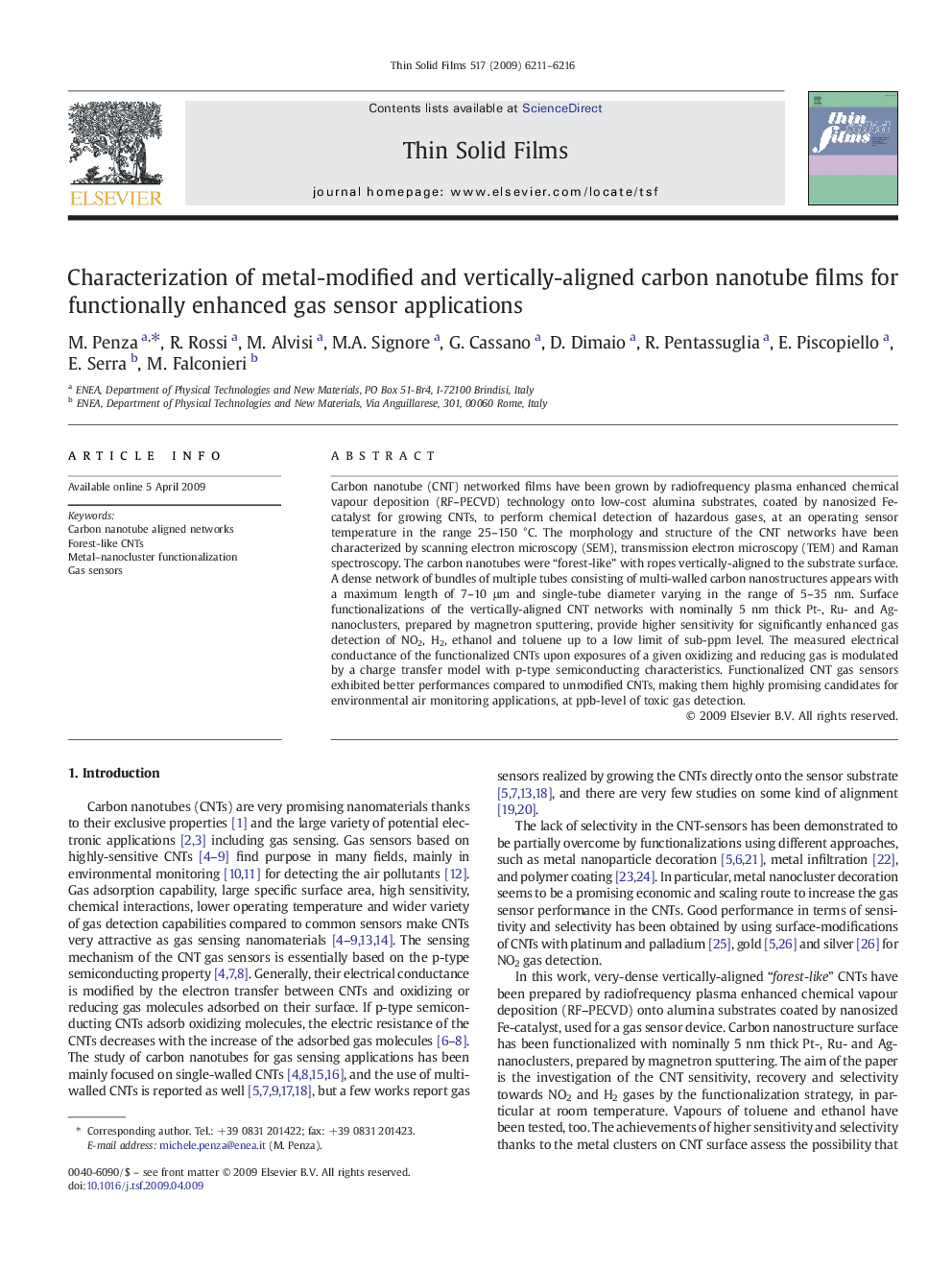| Article ID | Journal | Published Year | Pages | File Type |
|---|---|---|---|---|
| 1672293 | Thin Solid Films | 2009 | 6 Pages |
Carbon nanotube (CNT) networked films have been grown by radiofrequency plasma enhanced chemical vapour deposition (RF–PECVD) technology onto low-cost alumina substrates, coated by nanosized Fe-catalyst for growing CNTs, to perform chemical detection of hazardous gases, at an operating sensor temperature in the range 25–150 °C. The morphology and structure of the CNT networks have been characterized by scanning electron microscopy (SEM), transmission electron microscopy (TEM) and Raman spectroscopy. The carbon nanotubes were “forest-like” with ropes vertically-aligned to the substrate surface. A dense network of bundles of multiple tubes consisting of multi-walled carbon nanostructures appears with a maximum length of 7–10 μm and single-tube diameter varying in the range of 5–35 nm. Surface functionalizations of the vertically-aligned CNT networks with nominally 5 nm thick Pt-, Ru- and Ag-nanoclusters, prepared by magnetron sputtering, provide higher sensitivity for significantly enhanced gas detection of NO2, H2, ethanol and toluene up to a low limit of sub-ppm level. The measured electrical conductance of the functionalized CNTs upon exposures of a given oxidizing and reducing gas is modulated by a charge transfer model with p-type semiconducting characteristics. Functionalized CNT gas sensors exhibited better performances compared to unmodified CNTs, making them highly promising candidates for environmental air monitoring applications, at ppb-level of toxic gas detection.
